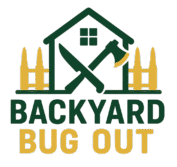
You never expect disaster to strike — until it does. Minutes after a tornado, blackout, flood, or wildfire, cell towers can be overloaded and power may be out. If your family members are at work, school, or on the road, how will you reconnect?
That’s where a family emergency communication plan comes in. A clear, written plan ensures everyone knows exactly who to contact, how to reach them, and where to meet when normal networks fail. Use this guide to build a plan your family will actually use — and practice — so you can stay connected through chaos.
Why a Family Emergency Communication Plan Matters
- Networks fail under stress. In major incidents, voice calls often jam; short text messages may still go through.
- Separation is likely. Emergencies rarely happen when everyone’s together. A plan bridges the gap between home, work, school, and errands.
- Clear roles reduce panic. When each person knows their job, there’s less confusion and faster action.
- It completes your preparedness system. A great bug-out bag or first aid kit only helps if you can coordinate. Pair this plan with your core guides: Power Outage Survival, Water Preparation 101, and Bug-Out Bag Essentials.
Step-by-Step: Build Your Family Emergency Communication Plan
1) Choose Your Communication Modes (PACE)
Use the PACE method — Primary, Alternate, Contingency, Emergency — to give your plan redundancy:
- Primary: SMS text. Keep it short and specific: “I’m safe at [location]. Going to [meeting point].”
- Alternate: Voice call. Use sparingly; networks clog easily during disasters.
- Contingency: Messaging apps or email. If internet holds, apps like Signal, WhatsApp, or Telegram can help.
- Emergency: Radios — FRS/GMRS handsets or amateur (ham) radios when nothing else works.
Pro tip: Pre-teach “macro” texts like “I am safe” and “Where are you?” to save time and bandwidth.
2) Pick an Out-of-Town Contact
Choose a trusted friend or relative who lives outside your area (ideally another state) to act as your central relay. Everyone in your family texts this person first; they serve as the status hub.
- Save their name, mobile, and email on every phone, labeled “ICE – Out-of-Town.”
- Confirm they’re willing and available.
- Decide on the check-in format: “SAFE + location + next action.”
3) Establish Meeting Locations
If you can’t reach each other by phone, you’ll still have pre-decided places to regroup:
- Local meeting point: A spot on your street (neighbor’s porch, mailbox, park bench).
- Regional meeting point: Outside your neighborhood (library, community center, a relative’s house).
- Fallback: If roads are blocked, coordinate through your out-of-town contact to pick a safe alternative.
Post the addresses, cross-streets, and simple directions that even a stressed-out mind can follow.
4) Assign Roles & Responsibilities
Divide tasks so nothing gets missed. Example table:
| Role | Responsibility |
|---|---|
| Communicator | Texts the out-of-town contact first and relays updates to others |
| Route Scout | Monitors conditions and finds safe routes to meeting points |
| Checker | Checks on nearby relatives/neighbors as assigned |
| Backup | Takes over if any role is unavailable or unreachable |
Adapt this to your family’s ages and skills. Teens can be great Checkers; detail-oriented adults often excel as Communicators.
5) Document & Distribute
A plan that lives only in your head doesn’t exist. Write it down and put copies where they’ll be used.
- Create a one-page emergency contact list with names, numbers, emails, and radio call signs if applicable.
- Make wallet cards for each person; store full copies in backpacks, glove boxes, and your emergency binder.
- Save a digital copy in cloud storage (Google Drive/Dropbox) for remote access.
6) Practice & Update
Treat this like a fire drill — low stress, high repetition:
- Quarterly drill: Send a group text, attempt a call, practice getting to meeting points, and time it.
- What-if scenarios: Practice when one person is at work/school, when a phone dies, or when your relay contact is unavailable.
- Review and refresh: Update numbers and roles after moves, job changes, new schools, or device upgrades.
Special Situations to Plan For
Kids at School or Daycare
- Learn the school’s emergency release procedures, pickup rules, and alert systems.
- Add the school office number and teacher contact to your plan.
- Include a note about who is authorized to pick up each child.
Elderly, Disabled, or Nonverbal Family Members
- List medications, mobility aids, and assistive devices (with locations).
- Include relay services for hearing/speech impairments and caregiver contact info.
- Assign a primary/backup person responsible for escort and transport.
Split-Household or Multi-State Families
- Each household keeps its own local plan.
- Share the same out-of-state contact as your coordination hub.
- Decide a common status code (“GREEN = safe, YELLOW = delayed, RED = need help”) to reduce confusion.
Pets & Service Animals
- Decide who transports which pet, where carriers/leashes are stored, and which meeting points are pet-friendly.
- Add vet numbers, microchip details, and medication notes to your contact list.
Radios 101 (Optional but Powerful)
If you’re ready to strengthen your emergency communications beyond phones:
- FRS/GMRS: Easy to use, great for neighborhoods and short-range family coordination.
- Amateur (Ham): Longer range and emergency nets; requires a license in the U.S.
- Create a tiny card: Channel, privacy code, and call schedule (e.g., “Try at :00 and :30 past the hour”).
Quickstart Template (Copy/Paste)
Family Name: ________ Address: ________
Primary Phone: ________ Secondary: ________
Out-of-Town Contact: ________ Phone: ________ Email: ________
PACE:
- Primary: SMS text (“SAFE at [location], moving to [meet]”)
- Alternate: Voice call
- Contingency: App/email ([app])
- Emergency: Radio (Channel __ | Privacy __ | Call times __:00 / __:30)
Meeting Points:
- Local: ________ (Address/Landmark)
- Regional: ________ (Address/Landmark)
Roles:
- Communicator: ________
- Route Scout: ________
- Checker: ________
- Backup: ________
Key Contacts: (School, Work, Caregivers, Neighbors)
- Name — Role — Phone — Email
- __________ — __________ — __________ — __________
- __________ — __________ — __________ — __________
Drill Schedule: Practice quarterly. Last drill: ________. Next drill: ________.
FAQs
How often should we update our family emergency communication plan?
At least annually — and any time phone numbers, emails, addresses, or roles change. Treat each practice drill as a chance to improve.
Who should be our out-of-town contact?
Pick someone reliable outside your local area who agrees to act as your check-in hub and can keep calm while relaying updates.
Should we include social media handles?
You can, but only as a backup. Prioritize text messages, then calls, and consider radios in areas with weak cellular coverage.
What if our family lives in multiple states?
Maintain a local plan for each household, then use the shared out-of-state contact as your coordination hub.
Should kids memorize numbers?
Yes. Memory fails under stress, so combine memorized “core” numbers with wallet cards and a printed contact sheet.
Next Steps
- Fill out the quickstart template above to finalize your family emergency communication plan.
- Print and distribute copies (wallets, backpacks, glove boxes, emergency binder).
- Schedule a 15-minute family drill this week.
- Round out your preparedness with these guides:
